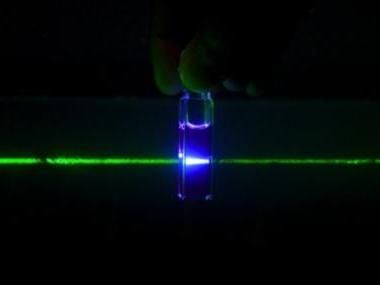The spontaneous and sophisticated side of self-assembly
Complex macromolecular nanostructures can be made in one pot, thanks to a method developed by German scientists. Andreas Hirsch and colleagues at the University of Erlangen-Nuremberg, in Germany, used metal complexation and hydrogen bonding interactions to encourage molecular building blocks to self-assemble into extensive branched networks.

Previous methods for obtaining such architectures suffer from having very complicated synthetic methods, explains Hirsch. ‘Our aim was to develop a very simple and easy to perform concept for the construction of dendrimers,’ says Hirsch. ‘We were motivated by mimicking supramolecular construction principles that nature uses in biological systems.’
Hirsch says his aim is to provide simple and efficient ways to make functional nano devices. ‘For example, if electro- and photoactive components are brought together in a highly ordered way on a transparent and conductive surface, inexpensive access to new organic solar cells could be possible.’
However, there are several challenges facing future work in this area, Hirsch explains. An absence of any chemical interference between the building blocks ‘is an important requirement for the concept, because only in this way defined architectures can be formed spontaneously,’ says Hirsch.
Original publication: Felix Grimm et al., Chem. Commun., 2009.
Organizations
Other news from the department science

Get the chemical industry in your inbox
By submitting this form you agree that LUMITOS AG will send you the newsletter(s) selected above by email. Your data will not be passed on to third parties. Your data will be stored and processed in accordance with our data protection regulations. LUMITOS may contact you by email for the purpose of advertising or market and opinion surveys. You can revoke your consent at any time without giving reasons to LUMITOS AG, Ernst-Augustin-Str. 2, 12489 Berlin, Germany or by e-mail at revoke@lumitos.com with effect for the future. In addition, each email contains a link to unsubscribe from the corresponding newsletter.



























































